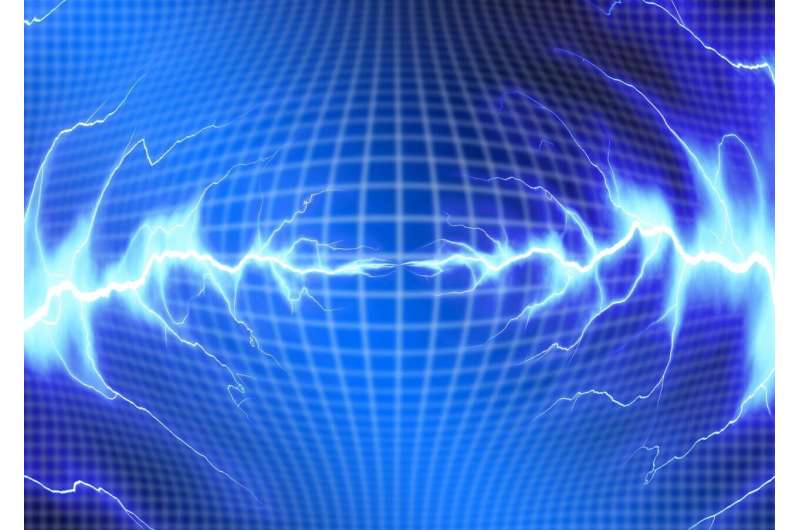The transformation of a pair: How electrons supertransport current in 'bad metals'

To researchers in the field, they are known as 'bad metals,' but they are not really so bad. As a matter of fact, they are the best superconductors because they are able to conduct current with the highest efficiency and without resistance up to high temperatures. This has been seen experimentally. Yet their behavior remains a mystery. The repulsive forces between the electrons in these materials are much stronger than in low-temperature superconductors: so how do particles with the same charge overcome these forces and manage to pair-up and to transport current as it happens in 'traditional' superconductors?
A team of researchers from SISSA in Trieste in collaboration with the Vienna University of Technology have found a possible, surprising answer. According to the study published in Physical Review Letters, in these materials the electrons would transform into new objects, with an unprecedented character that would allow them to pair up and thereby superconduct the current. In their research, the researchers also demonstrated the peculiarity of a new type of bad metals, called 'Hund's metals,' important for a class of iron-based materials. Scientists believe that these materials are particularly interesting because they are superconductive and rather malleable, which makes them highly suited to technological applications.
Low-temperature superconductors
"Superconductors are interesting materials because they hide many mysteries that remain unsolved and, at the same time, they offer an incredible application potential," explain Laura Fanfarillo, Angelo Valli and Massimo Capone, authors of the research. They are chemical compounds which, below a critical temperature, conduct electricity without any resistance, so without heat dissipation. It is easy to imagine their potential in the technological field. Were it not that for many of them, so-called low-temperature superconductors, superconductivity appears at temperatures very close to the absolute zero, making their use complicated and very costly. However, there are also high-temperature superconductors, such as bad metals, whose critical temperature, although well below zero, require a much less complicated and expensive cooling. For this reason, these materials are considered to be the most interesting superconductors to explore in order to shed light on the physical characteristics that make them so special.
'And yet they move (together)'
The researchers explain that, "In low-temperature superconductors we know that superconductivity is the result of the pairing of electrons that overcome the repulsion due to their negative charge thanks to a 'mediator.' Once organized into pairs the electrons begin to move coherently and transport electric current without encountering any resistance. In bad metals, the Coulomb repulsion, which the electrons are subject to, is much stronger than in traditional metals. This repulsion, in theory, should prevent even more decisively the formation of these pairs and the transport of the supercurrent." This is where the question arises: "Since we know that the pairing between electrons is the mechanism at the base of superconduction and that, at least in this case, there is a mediator, it remains to be understood how bad metals are such good superconductors. With our calculations, we have tried to shed light on this intriguing mystery."
Quasiparticles to conduct electricity
What the scientists discovered is that it is precisely the characteristics that, at a superficial glance, would make them the worst possible candidates, that turn these materials into such powerful superconductors. In these materials, the electrons transform into peculiar quasiparticles whose characteristics are actually much more compatible with pairing, thereby justifying their experimental behavior. However, it does not end here: "In this work we also demonstrated that a new type of bad metal characterized by a peculiar type of repulsion, called 'Hund's metal,' opens up interesting prospects in the field of superconductivity. Our results," conclude the scientists "accurately and elegantly explain a quantity of experimental evidence in the class of ferrous superconductors, a relatively new type of material discovered in 2008, but whose unprecedented properties are still a field of investigation full of questions for scientists."
More information: Laura Fanfarillo et al, Synergy between Hund-Driven Correlations and Boson-Mediated Superconductivity, Physical Review Letters (2020). DOI: 10.1103/PhysRevLett.125.177001
Provided by International School of Advanced Studies (SISSA)





















